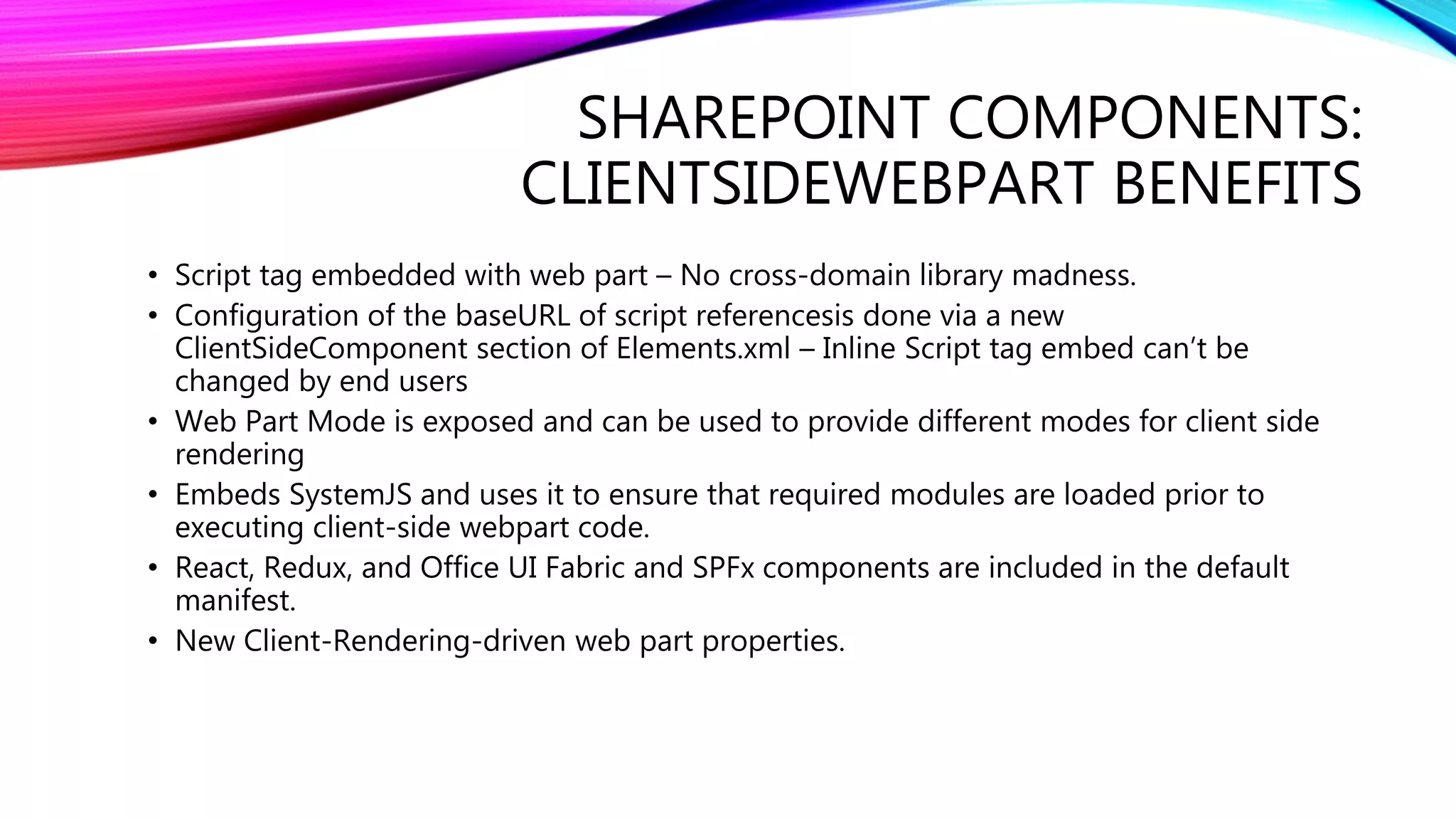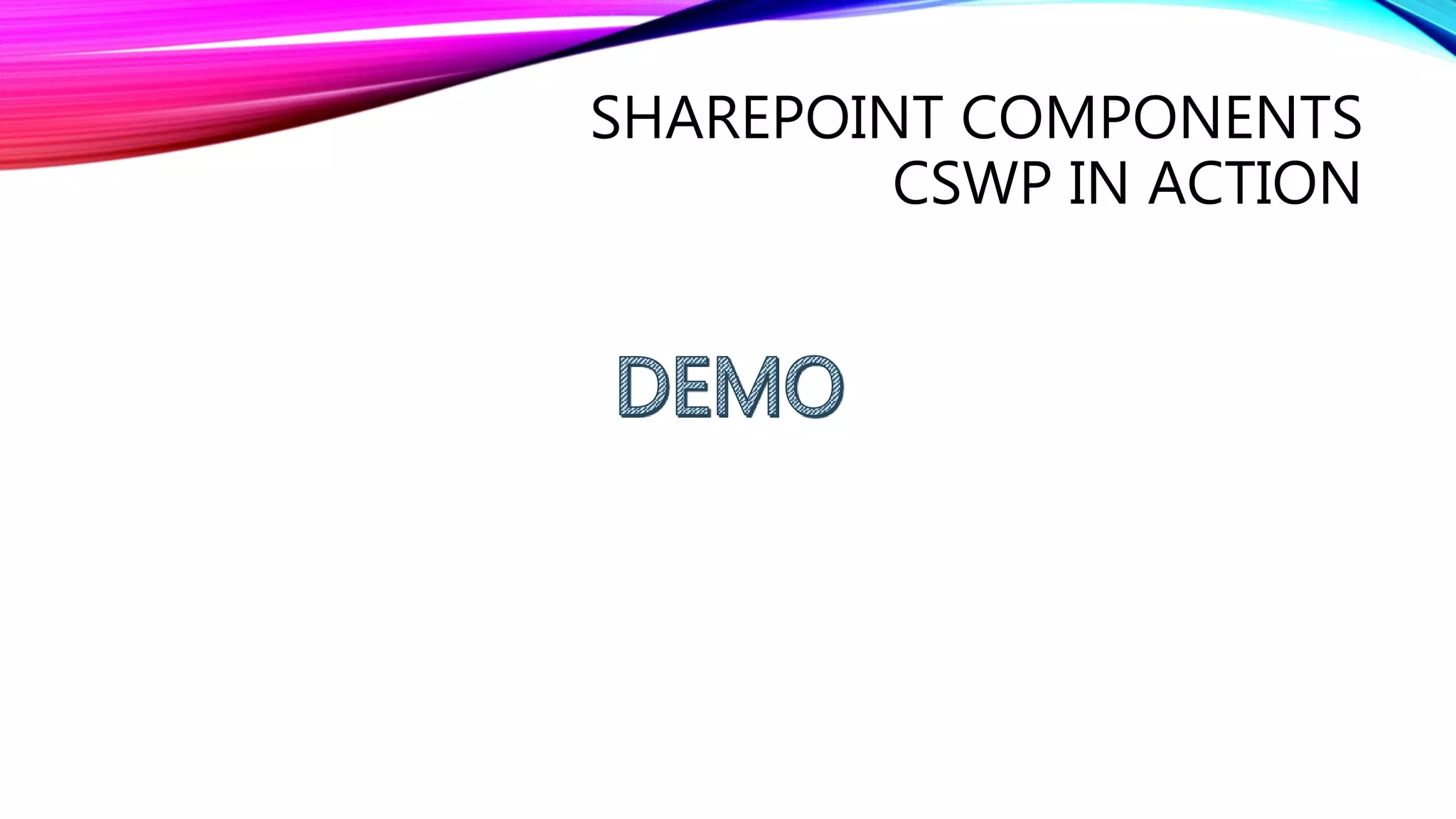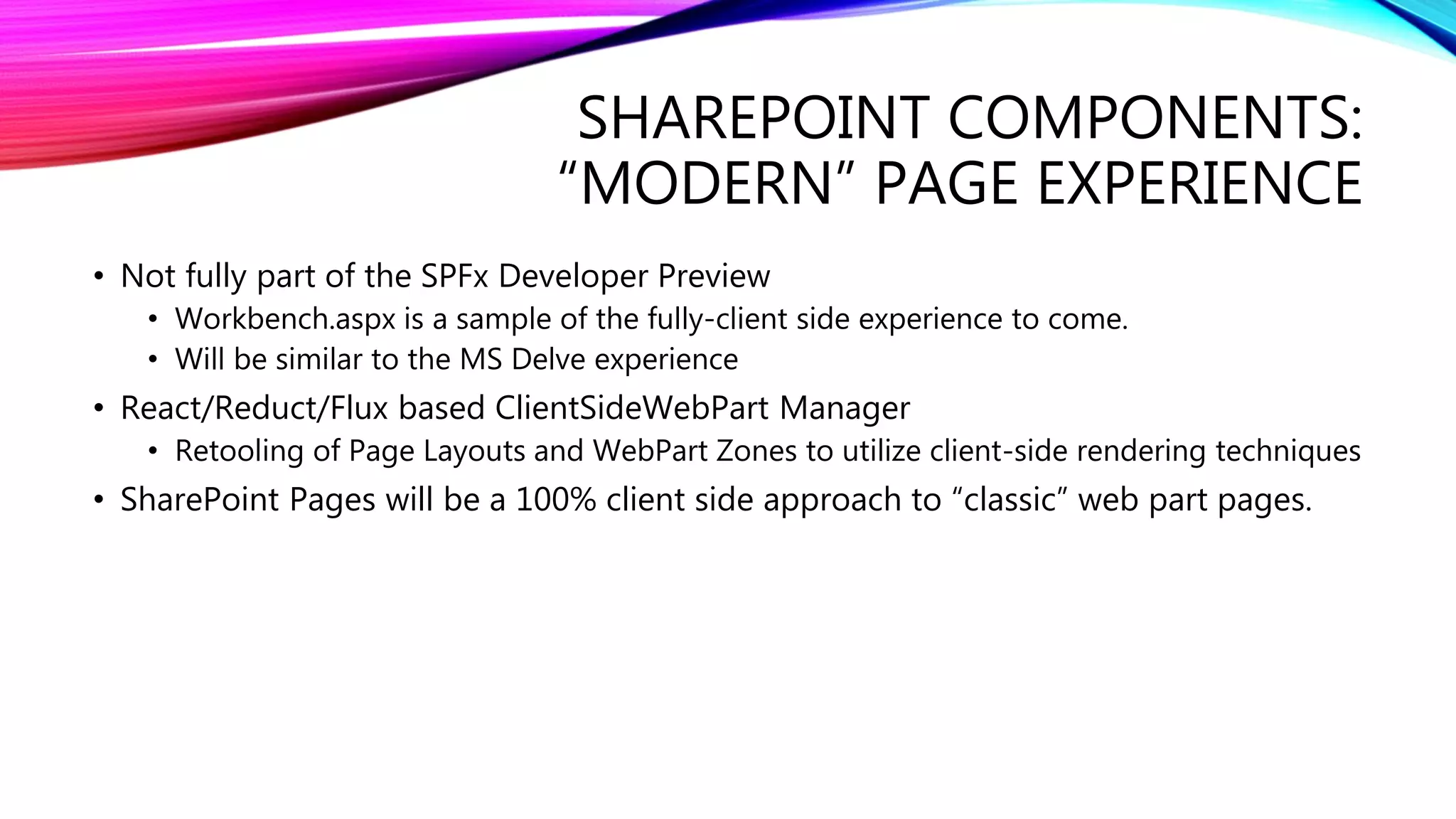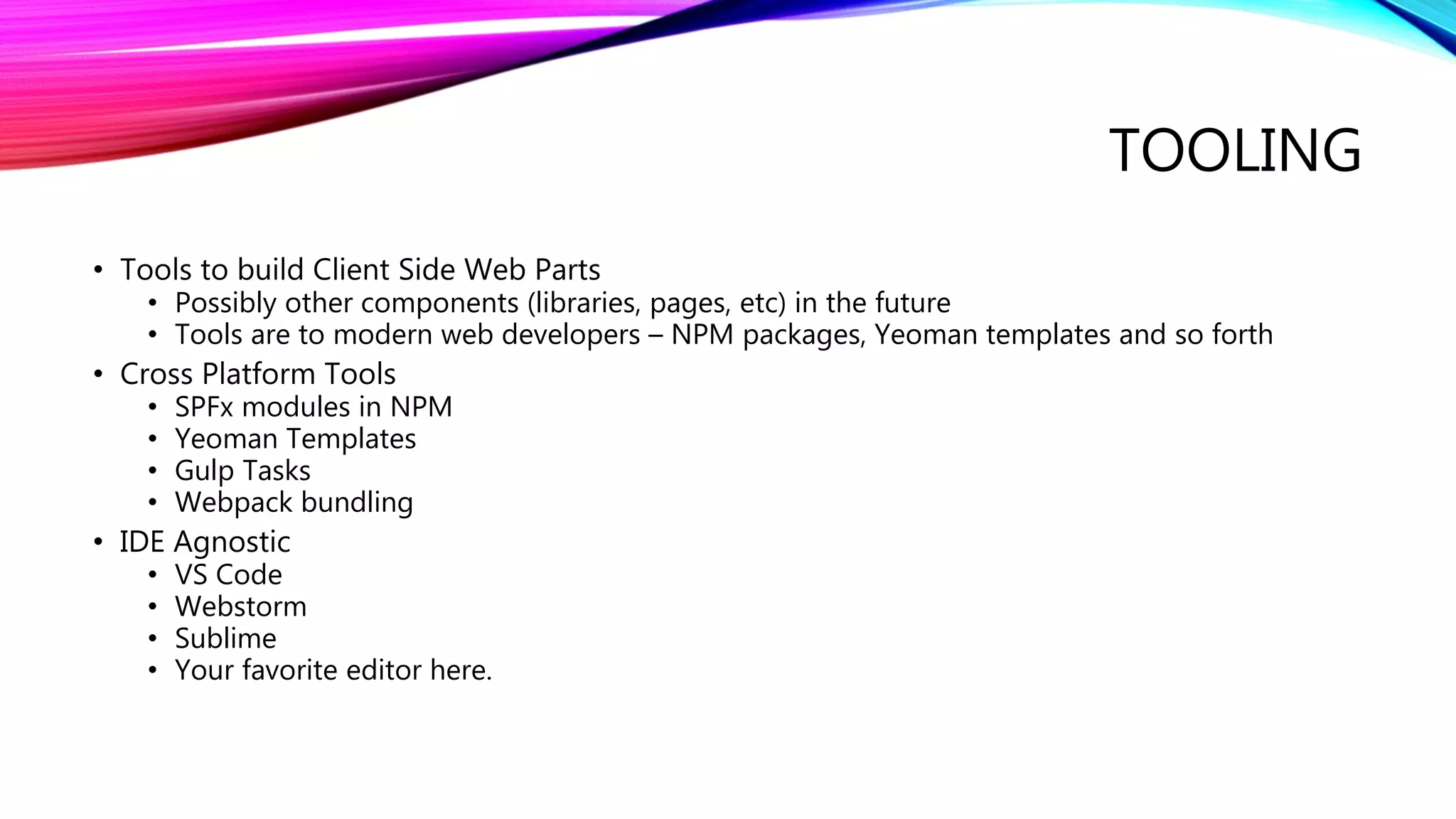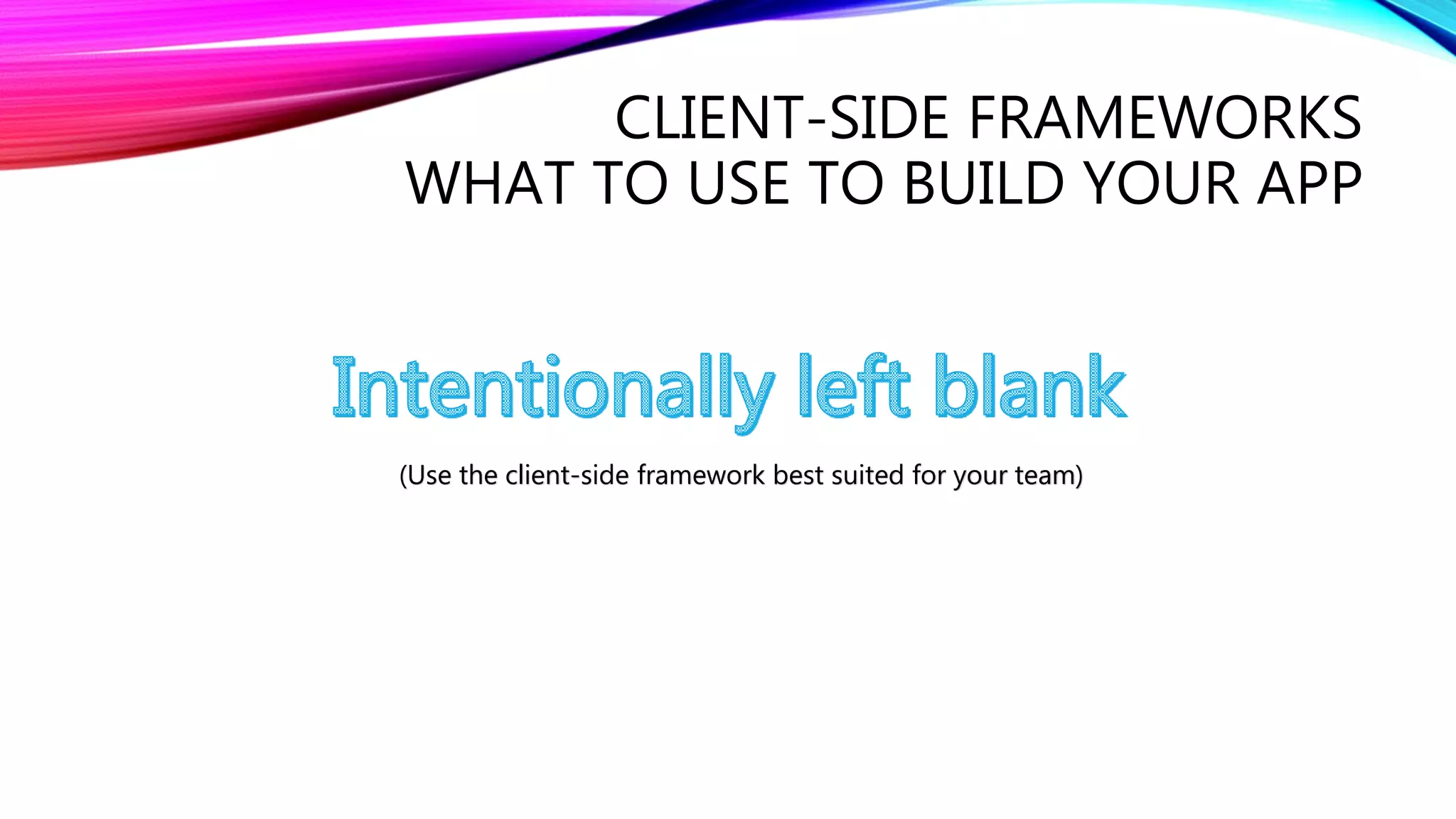The document provides an in-depth analysis of the SharePoint Framework developer preview. It describes the new SharePoint components, including ClientSideWebPart, modern page experiences, and webhooks. It also outlines the tooling used to build components, such as Yeoman templates, NPM modules, and Webpack. Finally, it discusses the client-side frameworks that can be used like React and Redux, and how existing approaches to client-side development can be complemented but not replaced by the SharePoint Framework.




